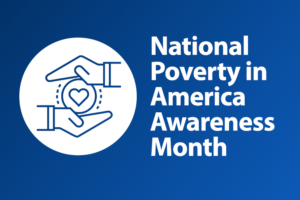Sarah Ford | November 21, 2013
Alzheimer’s Disease: A Public Health Problem of Epidemic Proportions – Especially for Women
There is a new case of Alzheimer’s disease (AD) diagnosed every 68 seconds, yet AD is the only leading cause of death that has no effective prevention or treatments. More than 5 million Americans age 65 and older have AD, and many more women than men suffer from it.
In observance of November – Alzheimer’s Disease Awareness Month – BrightFocus is exploring and sharing what science knows about women and Alzheimer’s, what questions remain unanswered, and the physical, emotional, and financial toll experienced by the caregivers.
Below is an excerpt from BrightFocus Foundation’s post, “Alzheimer’s and Women: A Research Update.”

The Age Factor
Many more women than men suffer from AD. A recent study reported that 3.4 million women age 65 and older, compared to 1.8 million men, are affected in the United States.1 Since the most powerful risk factor for Alzheimer’s disease is age, many researchers believe that women’s greater life expectancy explains why so many more women are affected. According to the latest census, Americans of both sexes now expect to survive into their early 80s, but women will live, on average, nearly three years longer than men.2 Researchers confirmed the importance of women’s longer survival as a risk factor for AD by following a large group of aging East Boston adults. They showed that the lifetime risk for AD among the women in this group was 32%, while the lifetime risk for men was only 18%.3
Male/Female Differences
Women’s lives and bodies differ from men’s in a variety of ways that might affect the course and expression of Alzheimer’s disease. Some studies have focused on socioeconomic factors including educational level, lifestyle, and the different stresses that affect women as compared to men. In addition, a very important body of research has explored the effects on AD of hormonal differences between men and women. Early research findings in animals indicated that estrogen has multiple beneficial effects on the brain including:
- Improved synapse formation
The synapse is a structure that permits cells to communicate with one another.
- Increased cerebral blood flow and glucose metabolism
- Increased choline acetyltransferase activity
This enzyme helps in the formation of acetylcholine, an important brain chemical involved in nerve cell communication.
- Reduced deposition of toxic beta-amyloid
One of the hallmarks of Alzheimer’s disease is the accumulation of beta-amyloid plaques between nerve cells in the brain.
- Prevention of mitochondrial damage
Mitochondria are the cell’s power plants, and also provide other important functions.
In women started on estrogen therapy in early post-menopause, estrogen therapy was shown to have cognitive benefits. The famous Women’s Health Initiative Study, however, reported an increased risk for dementia among women who began estrogen or estrogen with progesterone at ages 65 to 79 years. This finding alarmed many patients and clinicians and led to a decrease in the prescribing of Hormone Replacement Therapy (HRT). Subsequent reconsideration of the many sources of data on HRT, however, has suggested an explanatory “window effect” or “timing effect” theory. This theory proposes that estrogen begun in early post-menopause has beneficial effects on the brain, but that estrogen’s potential benefits in older women are outweighed by detrimental effects including enhanced clotting and inflammation.4
Surprisingly, some research suggests that not only the number of affected people, but also the character of the disease is affected by gender. Men with AD have been found more likely to show aggressiveness,5–6 preoccupation with bodily function, and apathy.6 Women, by contrast, have been found to show more reclusive behavior, emotional lability, hoarding, and refusal of help.6
Get Resources and Insights Straight To Your Inbox
Explore More Articles
Open Position: Customer Service Coordinator (Remote-Part Time)
Position Title: Customer Service Coordinator (Remote – Part Time) Department: Charitable Funds Management Solutions We are a non-profit charitable organization looking for skilled individuals who…
Read ArticleGet Resources and Insights Straight To Your Inbox
Receive our monthly/bi-monthly newsletter filled with information about causes, nonprofit impact, and topics important for corporate social responsibility and employee engagement professionals, including disaster response, workplace giving, matching gifts, employee assistance funds, volunteering, scholarship award program management, grantmaking, and other philanthropic initiatives.




